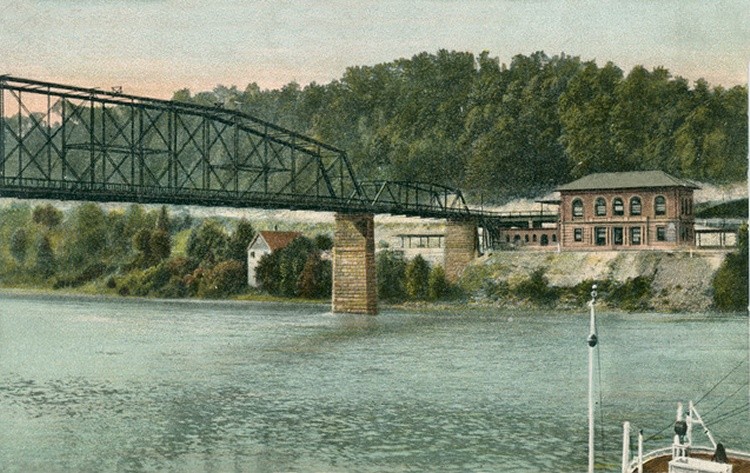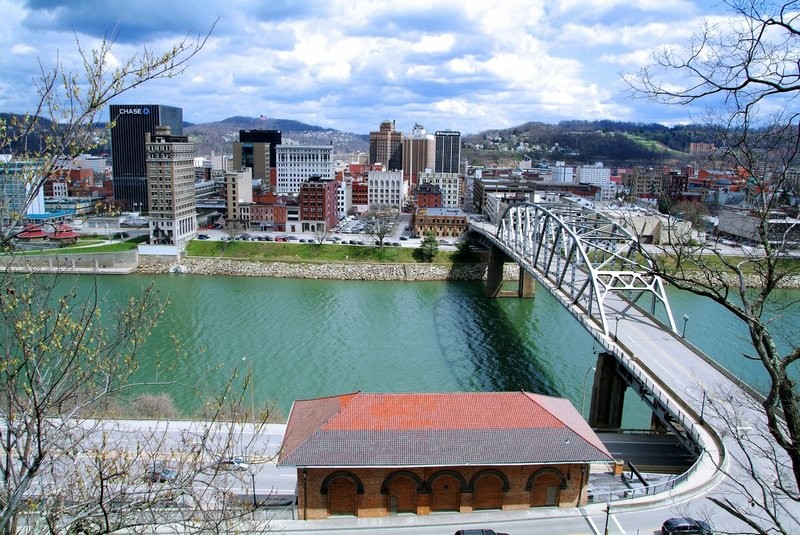South Side Bridge
Introduction
Text-to-speech Audio
Images
Historic image of original 1891 bridge and C&O Depot on right. Photo courtesy of mywvhome.com, direct link in sources section.

The South Side Bridge connects Downtown Charleston with the South Side.

Backstory and Context
Text-to-speech Audio
Prior to the completion of the South Side Bridge in 1891, the only way to cross the Kanawha to the South Side of Charleston was by ferry boat. The Charleston and South Bridge Company was incorporated in 1890, and hired S. C. Weiskopf as the bridge’s chief engineer. Jutt, Stratton, & Foley built the supporting structure of the bridge, while Keystone Bridge Company built the actual bridge. The South Side Bridge was the first to stretch across the Kanawha River at Charleston, and in result the local ferry businesses fell apart as they were no longer needed. The South Side Bridge was equipped with a toll until 1914 when the county purchased the structure.
The original South Side Bridge was built in 1891 in Charleston, WV for easier access to the Chesapeake & Ohio Railway on the south side of Kanawha River. Construction of the bridge connected the city and strengthened development on the south side of the river and the area that is now South Hills. The original bridge remained in use for 35 years until it was condemned and demolished in 1936. Construction of the new South Side Bridge began in 1936 and completed in 1937 as part of a Works Progress Administration (WPA) project. The large New Deal project aimed to revitalize downtown Charleston and included the Municipal Auditorium, Kanawha Boulevard, and South Side Bridge, as well as updating existing infrastructure.
In 1990, the South Side Bridge underwent a much needed
revitalization. The bridge has two lanes travelling in both directions as well
as sidewalks on both sides; it is also open to bicycle traffic. The most recent
daily traffic estimate states that over 20,000 vehicles use the bridge every
day. It is the principal link between downtown and South Hills. The South Side
Bridge is eligible for the National Register of Historic Places, but as of 2016
it has not been officially added.
Sources
Peyton, Billy Joe. Then & Now: Charleston. Charleston, SC. Arcadia Publishing, 2010.
Charleston Century Chronicle. Charleston: A Capital Experience. Atlanta, Georgia. Riverbend Books, 2000.
Rice, Otis K.. Charleston and the Kanawha Valley. Windsor Publications, Inc, 1981.
Morgan, John G.. Charleston 175. Charleston, WV. The Charleston Gazette, 1970.
Laidley, W. S.. History of Charleston and Kanawha County West Virginia and Representative Citizens. Chicago, IL. Richmond-Arnold Publishing Co..
